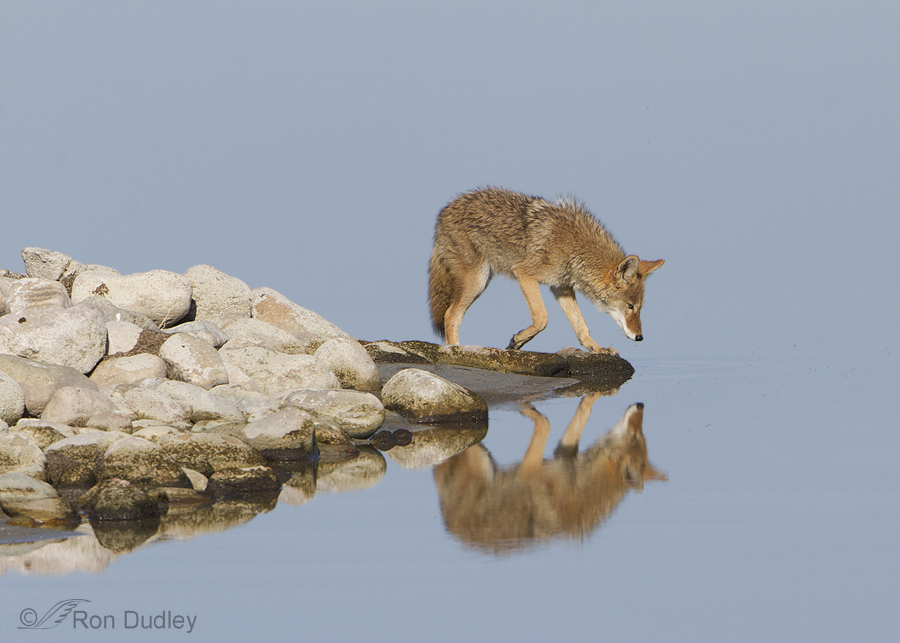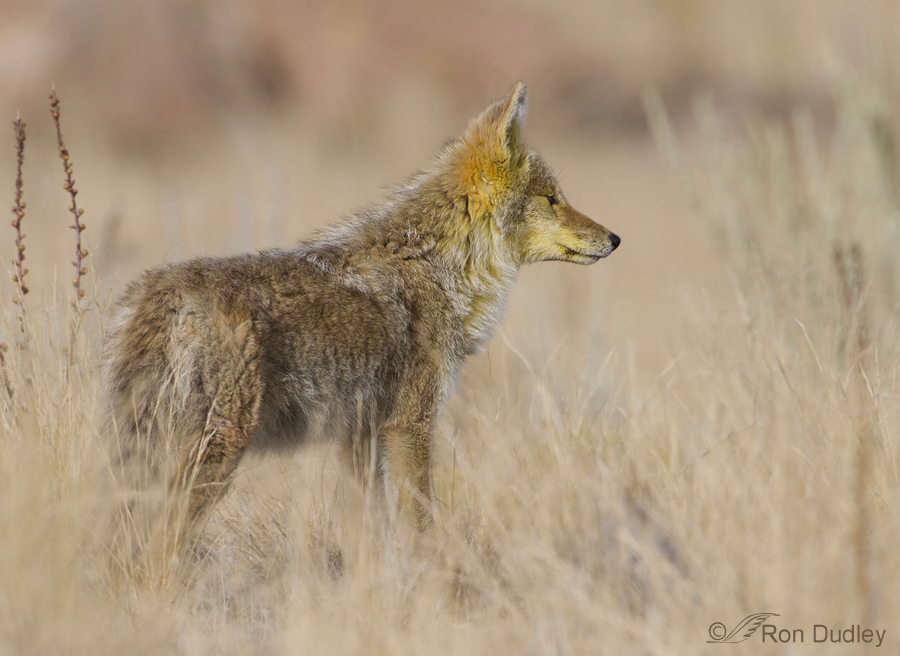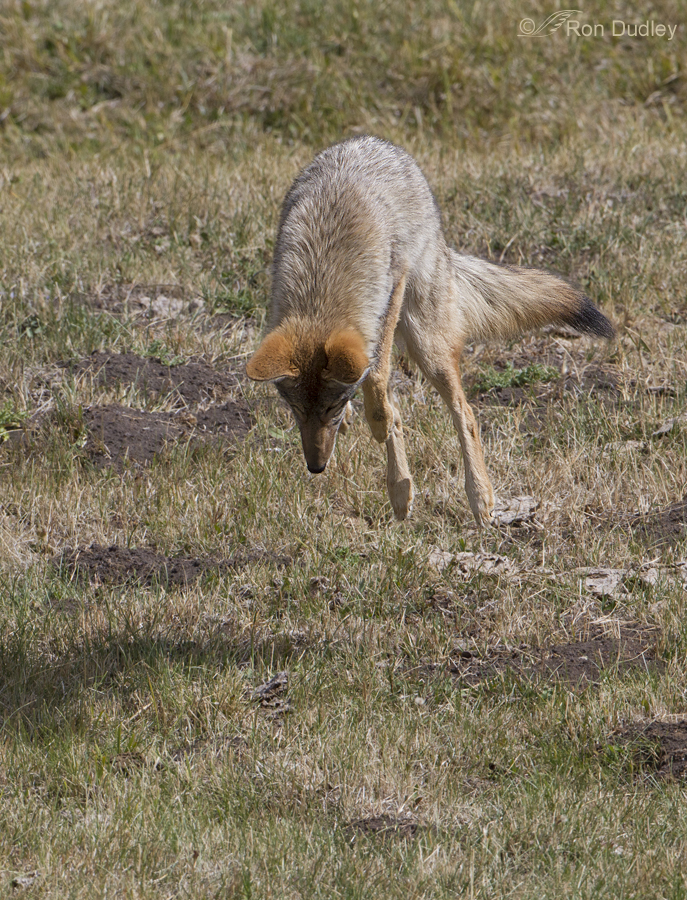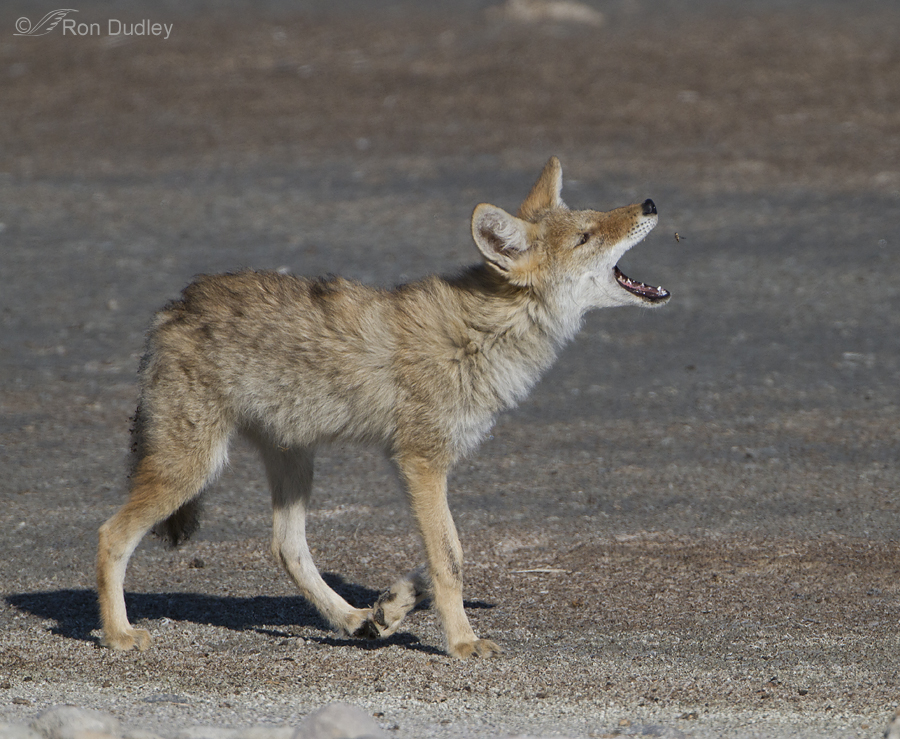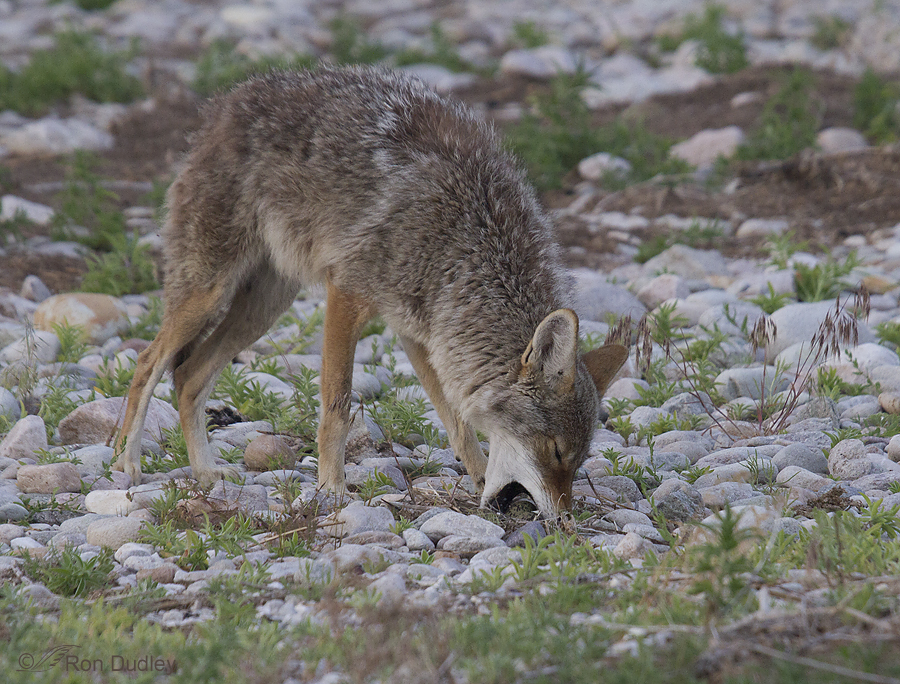If you think this coyote looks befuddled, you’re right. 1/1250, f/7.1/, ISO 400, 100-400 @115mm As it crossed the road right in front of me (about two weeks ago) it suddenly stopped in complete bewilderment because it could feel something on the left side of its neck, but when it turned to investigate the young coyote apparently couldn’t see what it was because the object was too close to its head and it was hidden in the crease of the neck. 1/1250, f/7.1/, ISO 400, 100-400 @115mm The offending object was a clump of grass which I could finally see when the coyote was able to nudge the bottom of the clump with its jaw and push it up where it was visible. 1/1650, f/7.1/, ISO 400, 100-400 @115mm The youngster finally got the grass clump pulled away from its fur, held it for a few moments in triumph and then unceremoniously dropped it and continued across the road… 1/800, f/6.3/, ISO 400, 100-400 @180mm where it captured a vole in less than two minutes. 1/640, f/5.6/, ISO 640, 500 f/4, 1.4 tc About a week ago I found this coyote staring at me in the early morning light. I love this warm light in the grassy setting. To me it almost looks like the coyote is smiling at me. 1/640, f/7.1/, ISO 640, 500 f/4, 1.4 tc And on the same morning, about 20 minutes later, another coyote crossed the road in front of me and proceeded to…
Continue reading
